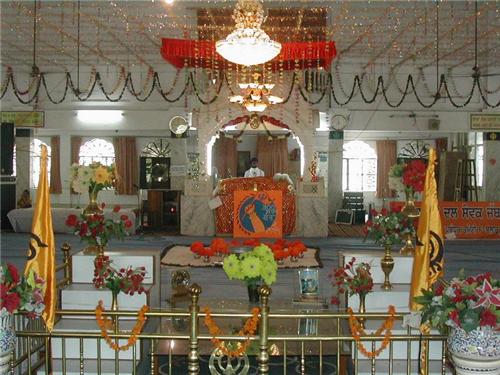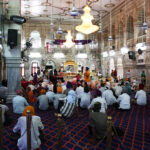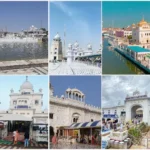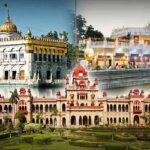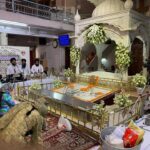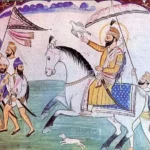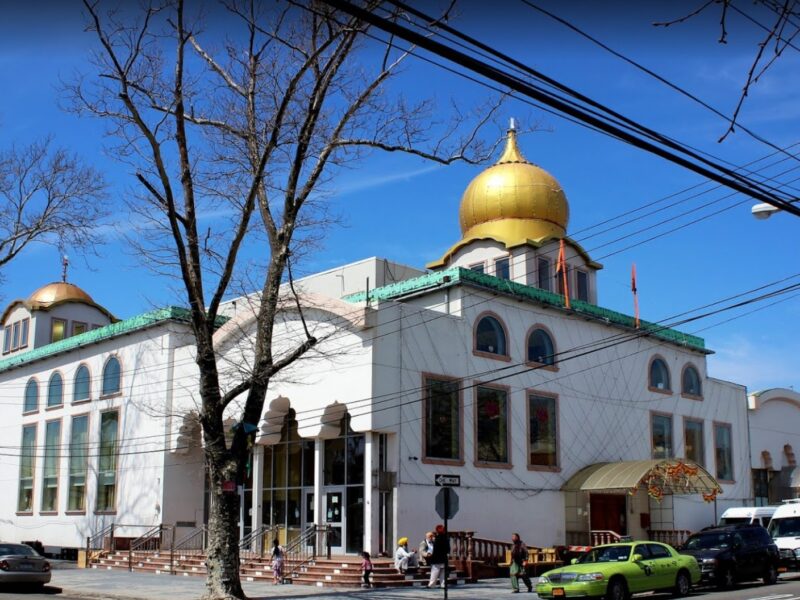Fateh Burj, Mohali
Fateh Burj was inaugurated in 2011, and it holds historical significance as it is located on a battle site. The minaret commemorates the victory of Sikh warrior Banda Singh Bahadur over the powerful Mughals. This victory is a key event in Sikh history and symbolizes the resilience and bravery of the Sikh community. Fateh Burj stands out as the tallest victory memorial in the entire country, with a height of 100 meters. The architectural style of the minaret showcases a blend of influences from various historical periods that have shaped the region. This fusion of architectural elements reflects the cultural diversity and historical richness of the area.
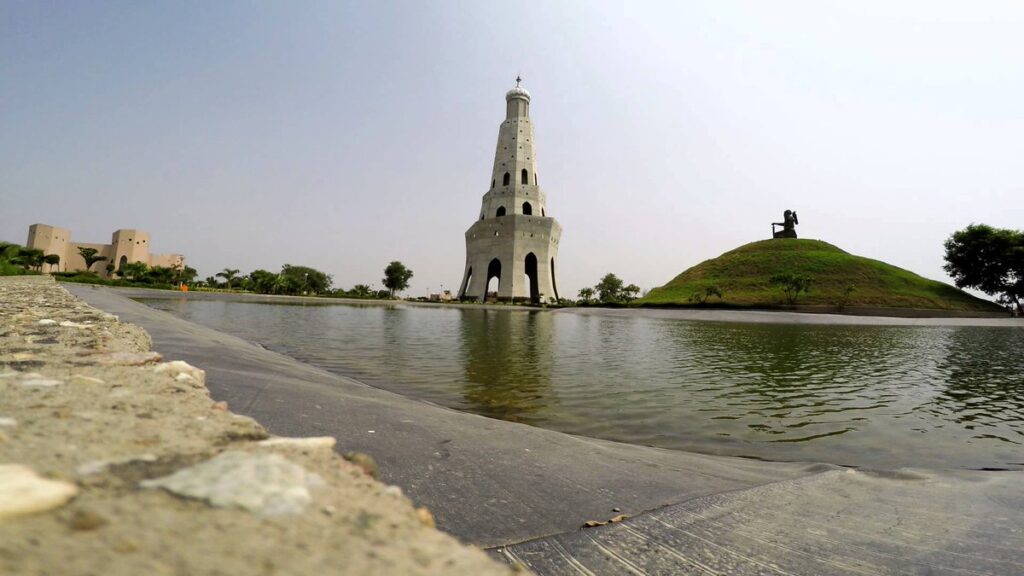
The height of Fateh Burj allows visitors to enjoy splendid aerial views of the surrounding city. This feature contributes to its popularity as one of the top tourist places in Mohali. Tourists and locals alike can appreciate panoramic vistas from the top, offering a unique perspective of the landscape.
The presence of a pond and mounds around the tower serves as a design tribute to the landscape where the actual battle between Banda Singh Bahadur and the Mughals took place. This thoughtful incorporation of natural elements adds a layer of historical and symbolic significance to the architecture, making the site more immersive for visitors.
Amb Sahib Gurudwara, Mohali
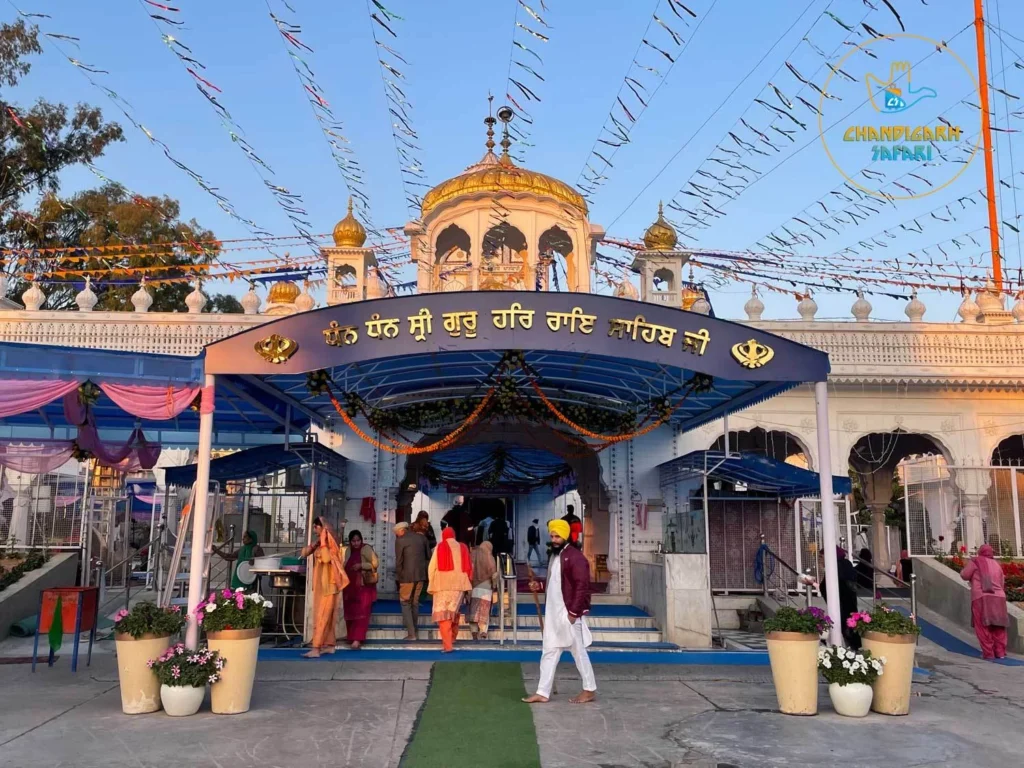
An integral part of the Sikh culture is the Gurudwaras – sites of immense spirituality, celebrated hospitality, and of course, gorgeous architecture. When you are in Mohali, you need to visit some of the iconic and revered spiritual and cultural centers of the region. One of the most visited ones among them is the Amb Sahib Gurudwara, dedicated to Guru Har Rai. The pristine white structure stands out of the countryside offering a spectacular sight. One of the striking features of the structure is its pillared corridor with multiple archways at the entrance. The central dome of the Gurudwara reflects the archetypal feature of Sikh religious architecture. The place is also known for its mango trees that bear fruit in every season.
Gurudwara Sant Mandal Angita Sahib, Mohali
The Gurudwara is described as a three-level structure that appears like a splendid palace from a distance. The well-manicured lawns leading up to the building add to its visual appeal. The milky white marble, which shimmers in the daylight, and the five domes on the roof contribute to the grandeur of the structure. This suggests a blend of traditional Sikh architectural elements, such as domes, with the use of marble for a more modern and elegant look.
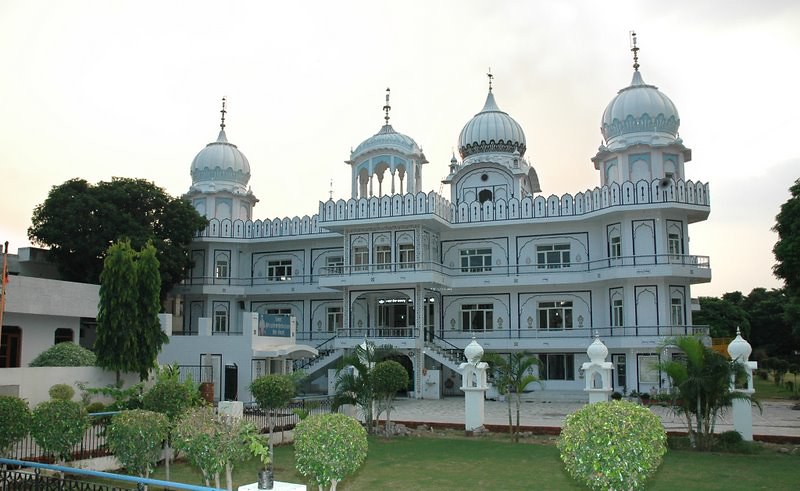
Notably, Gurudwara Sant Mandal Angita Sahib is mentioned to house medical facilities and residential quarters. This indicates that the Gurudwara is not just a place of worship but also serves the community in various ways. The provision of medical facilities aligns with the Sikh principles of selfless service and humanitarianism. Residential quarters may suggest that the Gurudwara serves as a center for community living or temporary accommodation for those in need.
Gurudwara Shri Mata Sunder Kaur Ji Sahib, Mohali
Mata Sundar Kaur Ji, along with Bhai Mani Singh Ji and Baba Deep Singh Ji Shaheed, got separated from Shri Guru Gobind Singh Ji at Gurudwara Shri Pariwar Vichoda Sahib, Sirsa River. This separation was a significant episode in Sikh history. After the separation, Mata Sundar Kaur Ji, Bhai Mani Singh Ji, and Baba Deep Singh Ji arrived in Mohali. Gurudwara Shri Mata Sundar Kaur Ji, located in Sector 70 behind Ivory Tower Flats, is believed to be the place where they took rest for a few days.
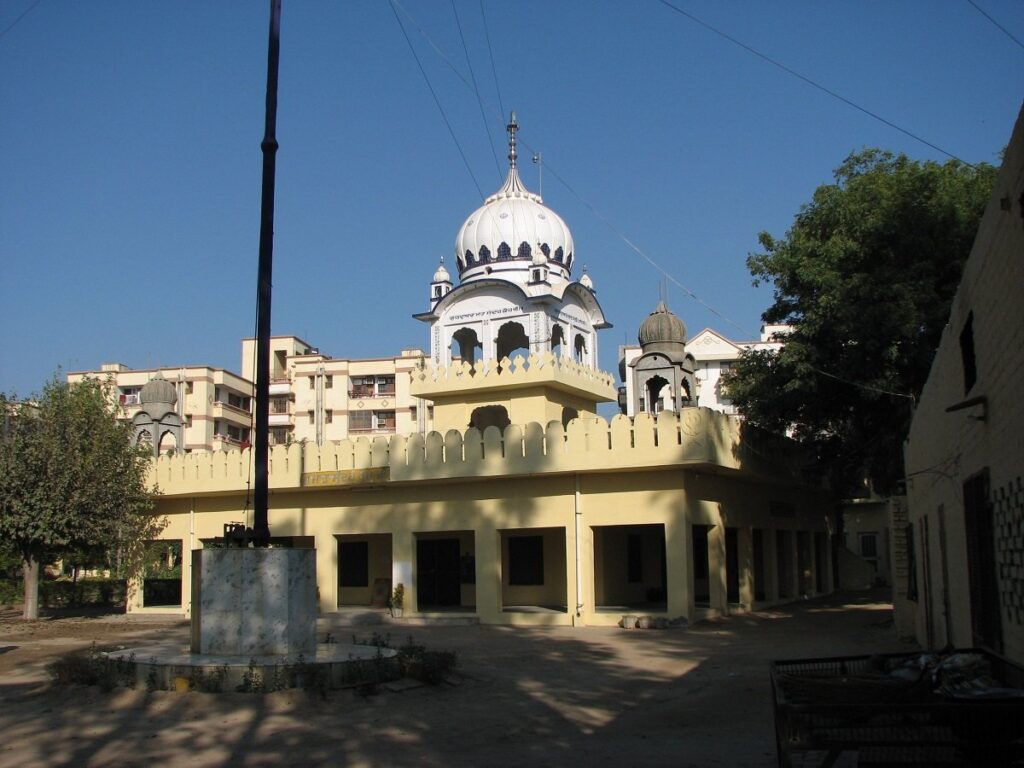
After resting at Gurudwara Shri Mata Sundar Kaur Ji, Mata Ji, Bhai Mani Singh Ji, and Baba Deep Singh Ji continued their journey towards Delhi. The details of their journey and experiences during this period are significant in Sikh history. Later, during the Battle of Chapar Chiri, fought by Baba Banda Singh Ji Bahadur, Gurudwara Shri Mata Sundar Kaur Ji played a role in providing langar (free community kitchen) for the army. The langar tradition is a fundamental aspect of Sikhism, emphasizing equality, community service, and selfless giving.
Gurudwara Sahib Singh Shaheedan in Sohana, Mohali.
Gurudwara Sahib Singh Shaheedan in Sohana, Mohali. This historical Gurudwara holds significance in commemorating the martyrdom of Jathedar Hanuman Singh and 500 Sikhs who fought against British forces during the Anglo-Sikh Wars. Gurudwara Sahib Singh Shaheedan is situated in the village of Sohana, close to Mohali City, Chandigarh, Punjab. The original Gurdwara was demolished, and a new building was under construction at the time of the information provided.
The Gurudwara is dedicated to honoring the memory of Jathedar Hanuman Singh and the 500 Sikhs who attained martyrdom during their resistance against British forces in the Anglo-Sikh Wars. The history recounts the bravery and sacrifice of these individuals in the face of adversity.
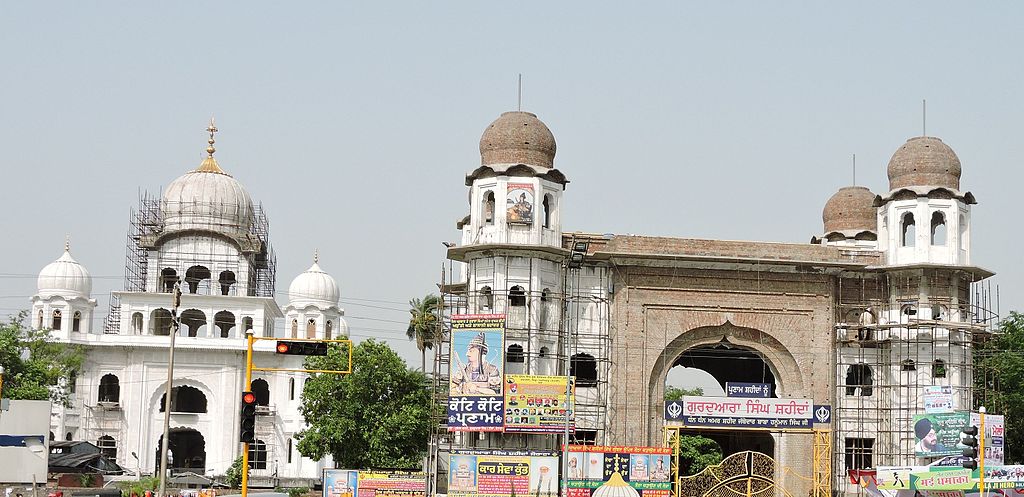
Born on November 18, 1755, at Narangpur Wala, Baba Hanuman Singh Ji was the son of Sardar Garga Singh Bath and Mata Harnam Kaur. His notable actions include responding to Maharani Jind Kaur’s call for help against the British after the death of Maharaja Ranjit Singh. Baba Ji played a crucial role in the Battle of Mudki, where Sikhs fought bravely, but a betrayal by Karam Singh and the British use of cannons led to significant losses.
Gurudwara Singh Shaheedan Sohana was built under the direction and supervision of Baba Harbans Singh Ji Karseva Bangla Sahib Delhi. This indicates the community effort and dedication involved in the construction of the Gurudwara. After the Battle of Mudki, Baba Hanuman Singh Ji, along with 500 Singhs, headed towards Gharam. They passed through Rajpura and ultimately reached Sohana. Despite facing powerful gunfire, Baba Ji and the Sikhs continued their journey until Baba Ji embraced martyrdom.
Gurdwara Shri Guru Teg Bahadur Sahib
Gurdwara Shri Guru Teg Bahadur Sahib is a Sikh place of worship dedicated to Guru Teg Bahadur Ji, who was known for his selfless service, compassion, and sacrifice for religious freedom. Gurdwaras honoring Guru Teg Bahadur can be found in various locations, each with its unique history and significance.

In general, a Gurdwara typically serves as a spiritual and community center for Sikhs. It houses the Guru Granth Sahib, the holy scripture of Sikhism, and provides a place for congregational worship, prayer, and community gatherings. Gurdwaras often have a Langar, a community kitchen that serves free meals to visitors, reflecting the Sikh principles of equality and selfless service.
To obtain specific details about Gurdwara Shri Guru Teg Bahadur Sahib in Sector 34, Chandigarh, I recommend reaching out to local Sikh community members, the Gurdwara management committee, or checking local directories and community websites. They can provide information about the Gurdwara’s history, services, and any events that might be taking place. Additionally, contacting the SGPC or local authorities can help you get accurate and up-to-date information.
Gurdwara Baoli Sahib
Shri Guru Gobind Singh Ji, after winning the Battle of Bhagani from Paonta Sahib, was on his way to Shri Anandpur Sahib. This battle marked an important event in Sikh history, showcasing Guru Ji’s valor and leadership. Guru Gobind Singh Ji’s journey took him through various regions, including Rani ka Raipur, and eventually led him to the outskirts of Dhakoli Village.
Dhakoli Village was laid down by Bhai Gurditta, the elder son of Guru Hargobind. This familial connection to the Gurus made the village significant, and as a result, it had a considerable Sikh population. On hearing about Guru Sahib’s arrival, Chaudhary Ishar Das, a prominent resident of the village, along with other followers, reached out to welcome Guru Gobind Singh Ji. This reflects the deep reverence and respect the community had for the Guru.
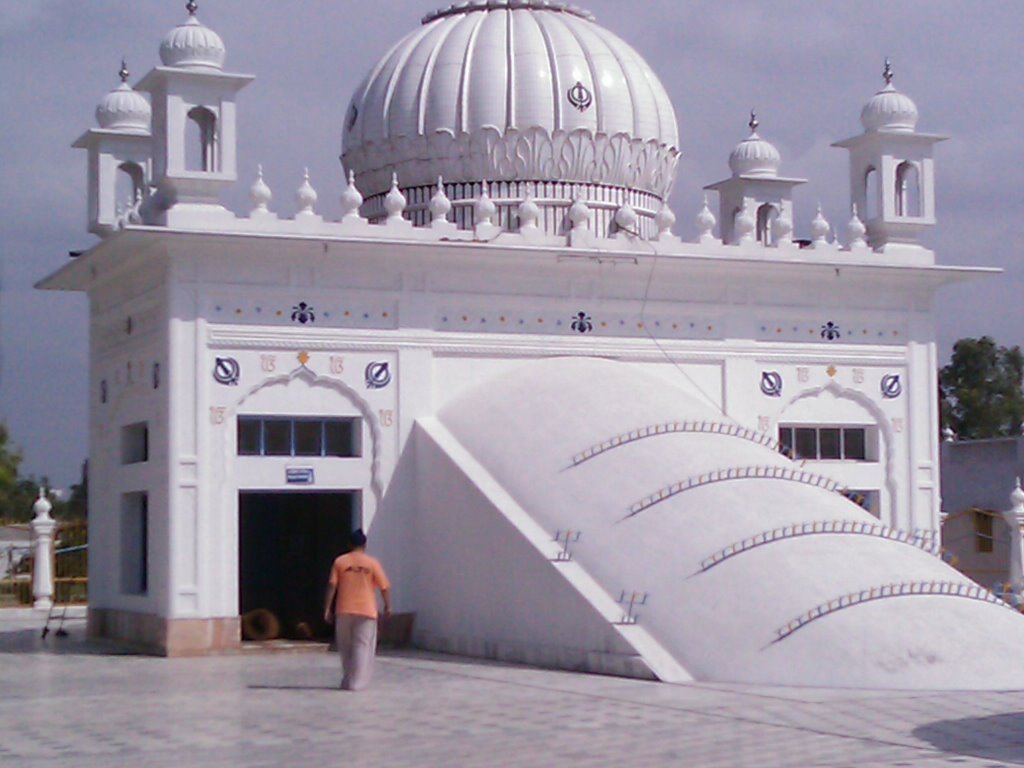
Upon meeting the villagers, Guru Gobind Singh Ji inquired about the welfare of the village and the surrounding area. This demonstrates the Guru’s concern for the well-being of the community and his desire for the prosperity of the region. The Gurdwara Baoli Sahib was established at this sacred site in Dhakoli Village to commemorate Guru Gobind Singh Ji’s visit and interaction with the community.
Gurdwara Baoli Sahib in Dhakoli Village stands as a testament to the historical events and the Guru’s connection with the Sikh community in the region. It continues to be a place of spiritual significance and a reminder of the Sikh principles of community, service, and devotion.
